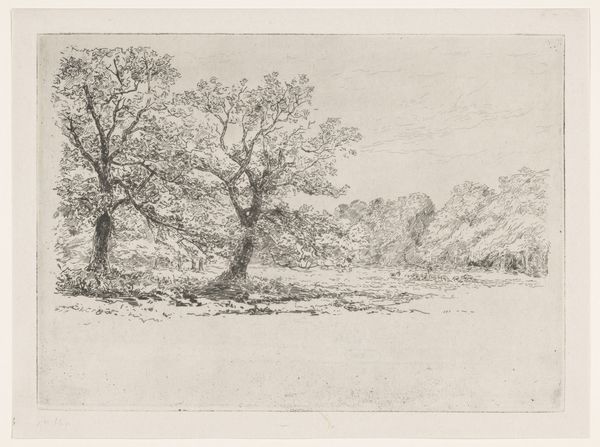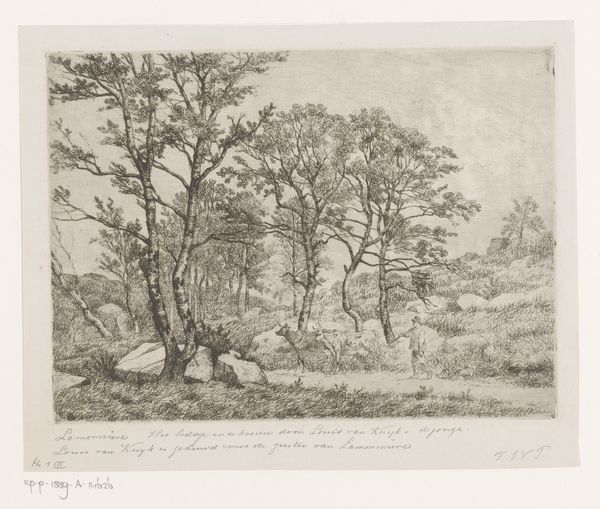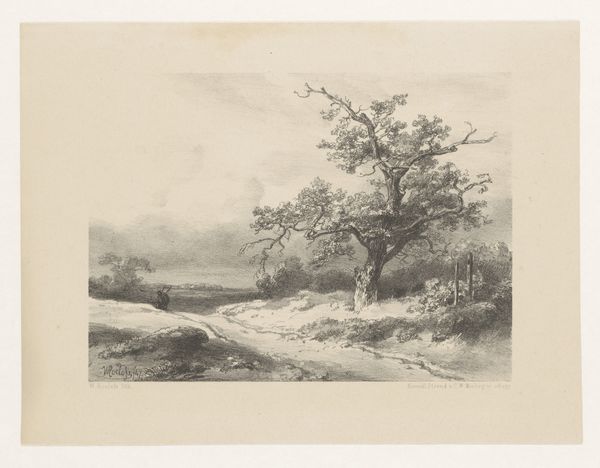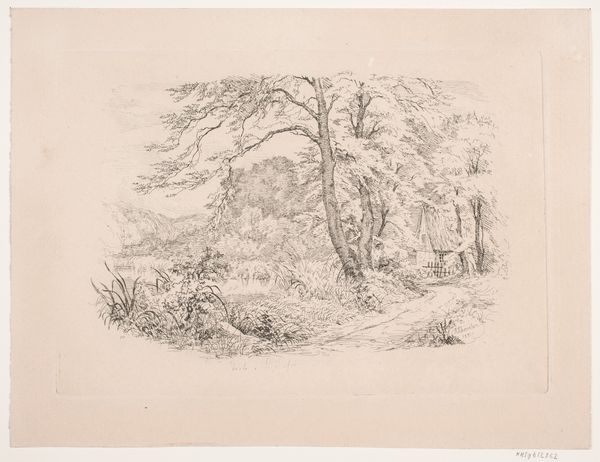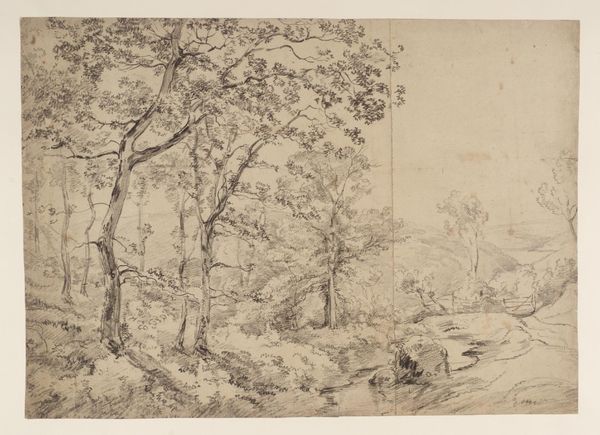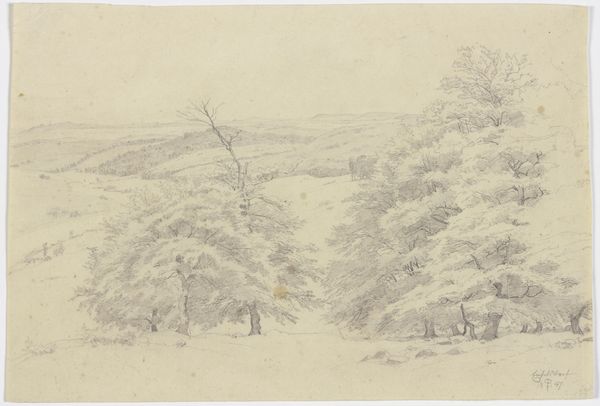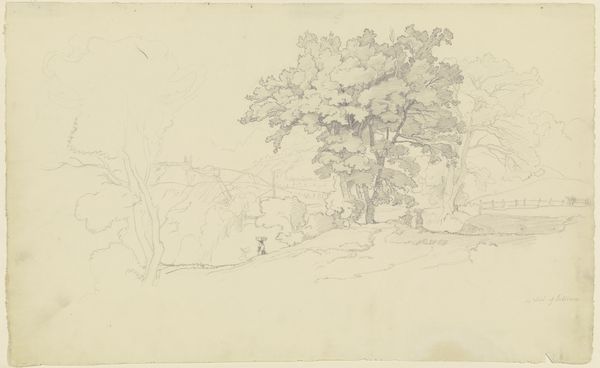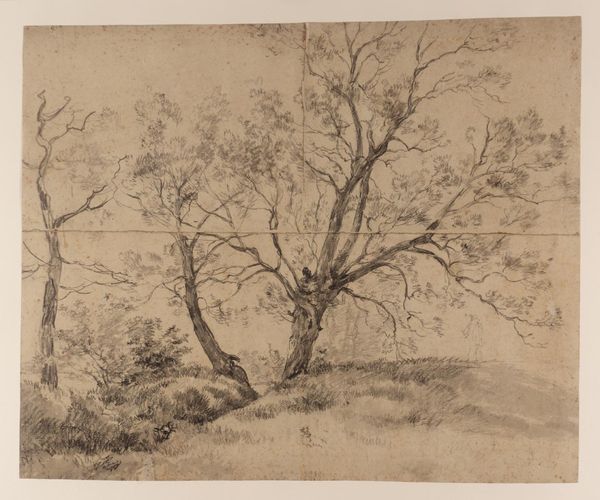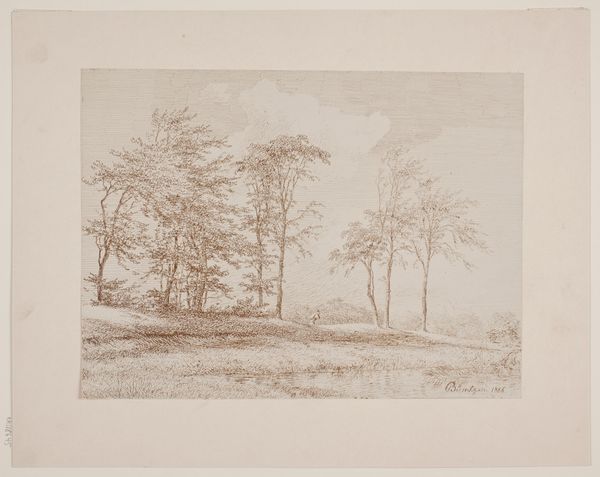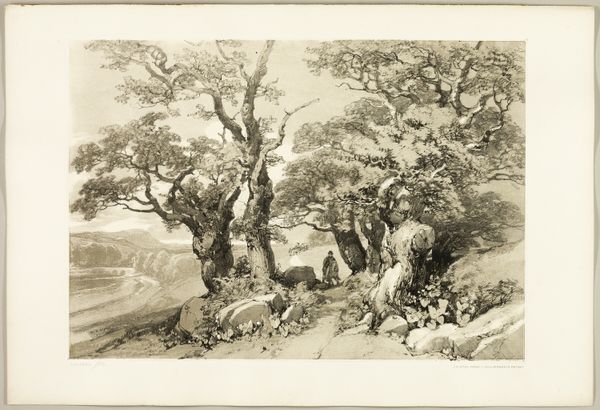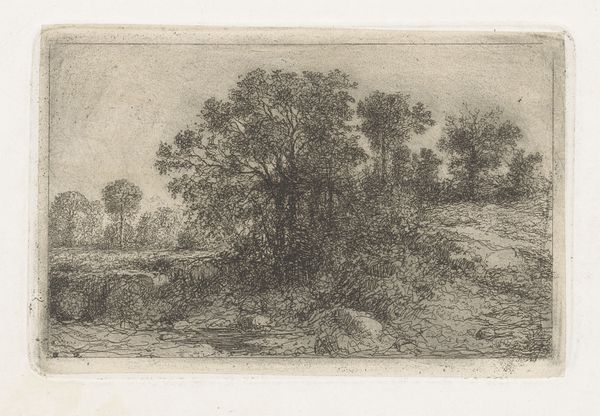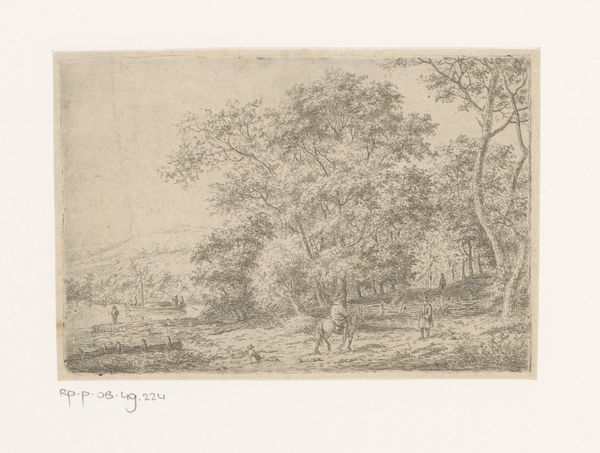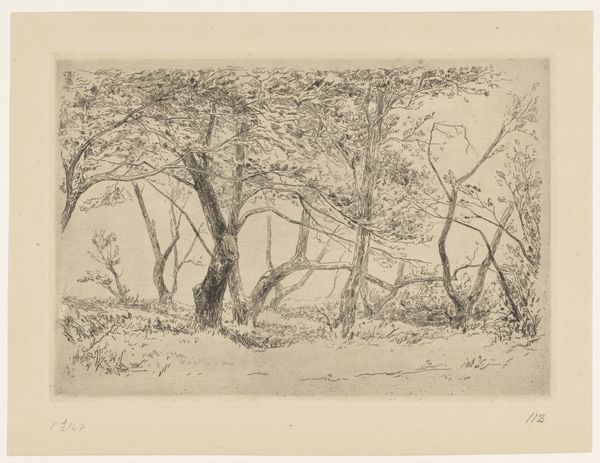
Gezicht in het bos van Fontainebleau met twee koeien 1838 - 1889
0:00
0:00
drawing, print, etching, paper
#
drawing
# print
#
etching
#
landscape
#
etching
#
paper
#
genre-painting
#
realism
Dimensions: height 162 mm, width 224 mm
Copyright: Rijks Museum: Open Domain
Curator: What a subtly powerful image! This etching by Jean Pierre François Lamorinière, created sometime between 1838 and 1889, offers us a "View in the Forest of Fontainebleau with Two Cows." The original is held right here at the Rijksmuseum. What strikes you about it? Editor: There's a wistful, almost melancholy feel. The monochrome and fine lines make the whole scene look fragile, like a fading memory of a once vibrant landscape. And the scale is so intimate, it feels very personal, almost like a peek into someone's quiet contemplation. Curator: It’s interesting you say “memory,” because the Forest of Fontainebleau held enormous cultural weight for artists of the time. It was not just a landscape, but a symbol of freedom and artistic integrity. It was politically charged because it allowed landscape painters the autonomy to work independently outside the constraints of academic and urban life. Editor: The trees certainly command attention here. Their gnarled forms, almost reaching out, could be interpreted as symbols of endurance and connection to the earth. Trees are ancient symbols with so much embedded cultural memory: growth, family trees, sheltering entities. I am curious why cows? Curator: Yes, those gentle cows. We shouldn't overlook them. Here, they serve, in part, as emblems of rural, simple life but are also representative of private ownership and industry, particularly the developing dairy industry. So the painting delicately balances idyllic naturalism with emerging capital interests. Editor: So those bovine figures suggest a subtle dialogue between humans and nature. What do you think the audience was expected to take away? Curator: Certainly, a longing for the purity of nature, but also perhaps a more nuanced view of the changes taking place in the countryside. Landscapes at this time became more politically charged as a stage for industrial developments and changing forms of social leisure. Editor: The delicate etching certainly makes one think! For me it prompts ideas of human interaction within the larger systems of nature and agriculture; like an awareness that everything is intertwined. Curator: That sense of intertwined lives feels like a great place to conclude our brief journey into this serene yet thought-provoking scene. Editor: Yes, a quiet meditation on nature and its cultural echoes. Thank you.
Comments
No comments
Be the first to comment and join the conversation on the ultimate creative platform.
